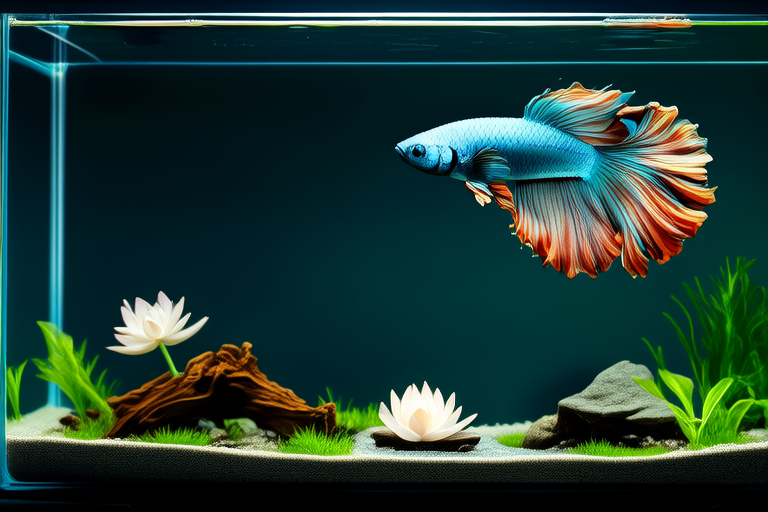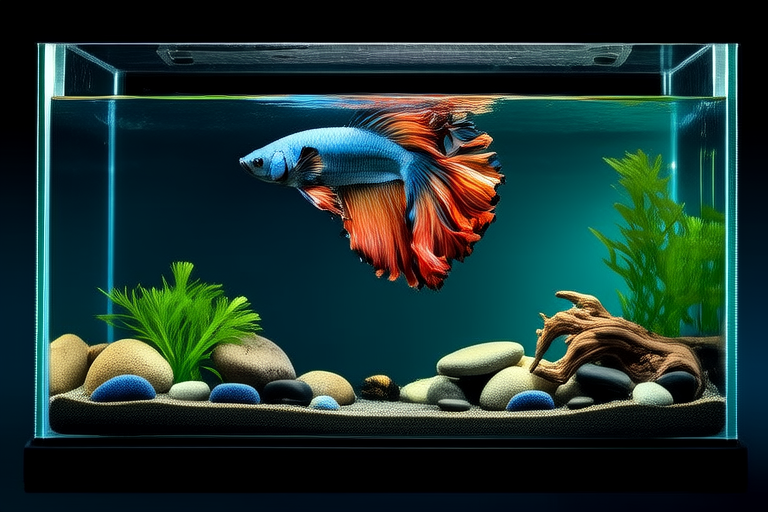
DIY Projects: Creating a Dreamy Habitat for Your Betta
Welcome to your guide on creating the perfect habitat for your beloved betta fish! Whether you’re a first-time fish owner or an experienced aquarist, setting up an ideal tank environment is crucial for your betta’s health and happiness. This article will walk you through selecting the right substrate, choosing suitable plants, ensuring proper water parameters, and adding delightful decorations to make your betta feel right at home.
Selecting the Right Substrate
The substrate forms the base of your betta’s world and can greatly influence its appearance and function. Gravel is the most popular choice due to its ease of cleaning and aesthetic appeal. Opt for small, smooth gravel pieces that won’t irritate your betta’s delicate fins. Avoid sharp or rough substrates as they may cause injuries. Additionally, choose a color that complements your chosen plants and decorations.
For a more natural look, consider sand as an alternative. It provides a soft bottom for your betta to explore but requires careful maintenance to prevent compaction and ensure good water flow. Ensure the sand particles are fine enough to prevent ingestion by your fish.
Choosing Suitable Plants
Plants offer hiding spots, reduce stress, and enhance oxygen levels in the water. They also provide a more natural environment, which is beneficial for your betta’s well-being. Live plants are preferable because they improve water quality by absorbing nitrates and releasing oxygen. Some easy-to-grow live plants include Java Fern, Anubias, and Cryptocoryne.
If you prefer artificial plants, opt for high-quality options with realistic textures and colors. These are easier to clean and maintain than live plants but do not provide the same benefits for water quality. Ensure all plant parts are free from sharp edges or harmful chemicals that could harm your betta.
Ensuring Proper Water Parameters
Maintaining appropriate water conditions is vital for your betta’s health. Start by using dechlorinated tap water or a water conditioner to remove chlorine and heavy metals. Aim for a temperature between 76°F and 82°F (24°C to 28°C) and a pH level between 6.5 and 7.5. Regularly test these parameters using a reliable aquarium test kit.
Adequate filtration is essential for keeping the water clean and oxygenated. Choose a filter that suits your tank size and doesn’t create excessive water flow. Betta fish prefer gentle currents, so avoid overly powerful filters. Additionally, perform weekly partial water changes, replacing about 25% of the water each time, to keep the environment fresh and healthy.
Adding Decorations
Decorations can transform your betta’s tank into a personalized space. Incorporate caves, driftwood, and other structures to mimic natural hiding spots. These provide security and reduce stress, especially during feeding times. Floating decorations like plastic plants or castles can also add visual interest and create a sense of depth.
Incorporate floating plants or artificial alternatives to create shade and reduce light intensity. Bettas prefer dim lighting conditions similar to their natural habitats. Avoid overly bright or direct sunlight, which can lead to algae growth and stress your betta.
Maintaining the Habitat
Regular maintenance ensures your betta’s habitat remains pristine. Perform weekly water changes and clean the tank glass using a magnetic cleaner. Remove any uneaten food promptly to prevent water pollution. Inspect your betta daily for signs of illness, such as lethargy, loss of appetite, or abnormal behavior.
Monitor the condition of your plants. Trim dead or yellowing leaves to encourage new growth and maintain water clarity. Replace artificial plants when necessary to preserve their appearance and functionality.
Troubleshooting Common Issues
If your betta shows signs of stress or illness, it may indicate problems with the tank environment. Check water parameters and adjust accordingly. Address any issues with water quality, such as high ammonia or nitrite levels, immediately. Consult a veterinarian specializing in fish if symptoms persist.
Algae growth can be managed by reducing light exposure, increasing water changes, and introducing algae-eating snails. Ensure the tank isn’t overstocked and maintain a balanced diet for your betta to prevent obesity and related health issues.
Valuable Insights for Experienced Bettas Owners
Experienced owners may benefit from incorporating advanced techniques to further enhance their betta’s habitat. Consider adding CO2 injection systems to promote plant growth and improve water quality. Implement automated dosing systems for precise chemical additions. Explore advanced filtration methods, such as sponge filters or canister filters, for optimal water circulation.
Encourage natural behaviors by providing interactive toys or puzzle feeders. These stimulate mental engagement and physical activity, contributing to overall well-being. Regularly rotate decorations and plants to keep the environment stimulating and prevent boredom.
Remember, the key to a thriving betta habitat lies in attention to detail and regular care. By following these guidelines, you’ll create a dreamy environment where your betta can thrive and flourish.



